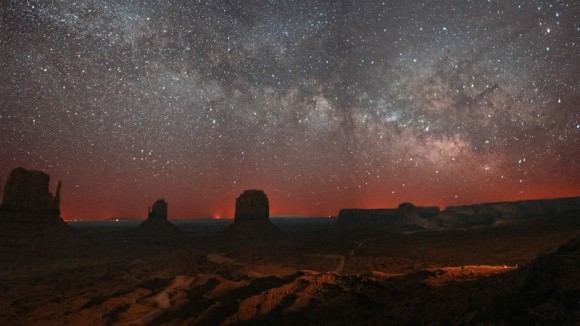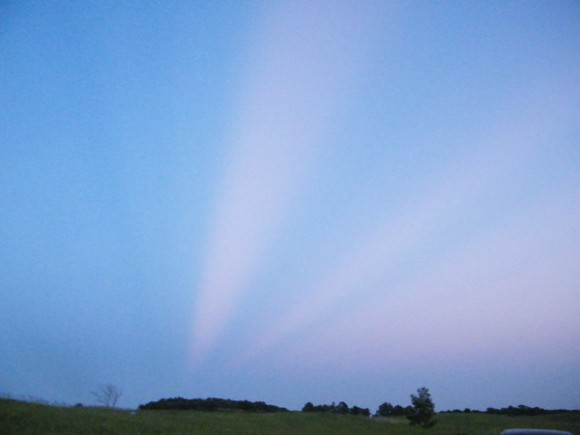Astrophotograher César Cantú from Mexico is visiting Utah and captured an incredible timelapse of the view at sunset along with the formation of anti-crepuscular rays — a spectacular optical phenomena where light rays scattered by dust and haze appear on the horizon opposite to the setting Sun.
The word crepuscular means “relating to twilight,” and these rays occur when objects such as hills or clouds partially shadow the Sun’s rays, usually when the Sun is low on the horizon. These rays are visible only when the atmosphere contains enough haze or dust particles and in just the right conditions, sunlight is scattered toward the observer.
Then occasionally, light rays scattered by dust and haze sometimes appear on “antisolar” point, (the horizon opposite to the setting Sun). These rays, called anti-crepuscular rays, originate at the Sun, cross over the sky to the opposite horizon, and appear to converge toward the antisolar point.
For both crepuscular and anti-crepsucular, the light rays are actually parallel, but appear to converge to the horizon due to “perspective,” the same visual effect that makes parallel railroad tracks appear to converge in the distance.
Above is an image I took a few years ago when I captured both crepuscular and anti-crepuscular rays at the same time. You can read about that here.
Here’s a a great night sky shot of Monument Valley from César:

Want to get your astrophoto featured on Universe Today? Join our Flickr group or send us your images by email (this means you’re giving us permission to post them). Please explain what’s in the picture, when you took it, the equipment you used, etc.

